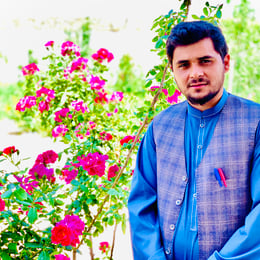The most authoritative answer in 2024
-
As a specialist in the field of herpetology, I've spent considerable time studying the behavior and adaptations of reptiles, including alligators. When the temperatures drop, alligators exhibit a unique response known as brumation. This is a period of dormancy that is similar to but not as deep as true hibernation. Let's delve into the details of how alligators cope with cold weather.
Firstly, it's important to understand that alligators, being ectothermic or cold-blooded, rely on their environment to regulate their body temperature. As the weather gets colder, their metabolism naturally slows down. This is a survival mechanism that helps them conserve energy when food is scarce and the environment is less favorable for activity.
During brumation, alligators seek out areas where the water is warmer, such as deeper parts of swamps or lakes, or they may choose to burrow into the mud or soil along the banks. The deeper water tends to be more stable in temperature and provides a more consistent environment. Burrowing into the mud offers insulation, helping to maintain a more constant body temperature and protect them from the harsh cold.
The statement that alligators can live in water as cool as 40°F (4.4°C) is accurate, but it's also important to note that this is a generalization. The survival of an alligator at such temperatures can depend on various factors including the alligator's size, health, and the duration of exposure to the cold. Younger or weaker individuals may indeed struggle and could potentially die if exposed to such temperatures for extended periods.
It's also worth mentioning that alligators do not enter a state of true hibernation. Unlike some mammals that undergo a deep hibernation state with significantly reduced body functions, alligators' metabolic activity does not slow to the same extent. They can still move and respond to their environment, albeit with reduced activity.
In conclusion, alligators have evolved a range of strategies to survive in cold conditions. They seek out warmer water, burrow for insulation, and enter a state of brumation where their metabolic processes slow but do not cease entirely. This allows them to conserve energy and survive until conditions improve.
read more >>+149932024-06-28 18:06:08 -

-
Alexander Adams——Works at Apple, Lives in Cupertino. Graduated from University of California, Berkeley with a degree in Electrical Engineering.
The actually brummate. That is, they react to a cold environment by slowing their metabolic activity, but certainly not to the deep torpor of true hibernation. Alligators are reptiles and are not warm-blooded. They have the ability to live in water as cool as 40oF, although weaker animals may die at that temperature.Apr 26, 2010read more >>+119962023-05-30 14:00:55
About “去哪里、短吻鳄、温血动物”,people ask:
- 50回复Do birds get cold in the winter time 2024?
- 83回复What is the habitat of a yellow spotted lizard 2024?
- 29回复Why are snapping turtles so aggressive 2024?
- 87回复How many hours a day do birds sleep 2024?
- 87回复Can reptiles live in the cold 2024?
- 18回复How can you help the birds in winter 2024?
- 19回复Do Eagles have a good sense of hearing 2024?
- 80回复Can you have a common snapping turtle as a pet 2024?
- 88回复Where do snakes live in the winter time 2024?
- 77回复Do butterflies hibernate or migrate 2024?
- 20回复What deer do during the winter 2024?
- 15回复Is it a good idea to hunt in the rain 2024?
- 14回复Where do birds go when it's very cold 2024?
- 74回复How does a deer survive in the winter 2024?
- 34回复What does a squirrel in the attic sound like 2024?
READ MORE:
- +1583What types of lizards are poisonous 2024?
- +1963Is there a real Camp Green Lake 2024?
- +1983How far do Monarch butterflies migrate in the winter 2024?
- +1196How many miles do monarch butterflies migrate 2024?
- +1340Do deer come out in the snow 2024?
- +1611Is it a good idea to hunt in the rain 2024?
- +1975What do squirrels do in the winter time 2024?
- +1811How does a deer mate 2024?
- +1763Do white tailed deer migrate or hibernate 2024?
- +1501How do deer keep from freezing in the winter 2024?
- +1873Can you tame a snapping turtle 2024?
- +1923Why are snapping turtles so aggressive 2024?
- +1405Where do the squirrels sleep at night 2024?
- +1115How many hours a day do birds sleep 2024?
- +1520How cold can a duck survive 2024?
QuesHub is a place where questions meet answers, it is more authentic than Quora, but you still need to discern the answers provided by the respondents.







